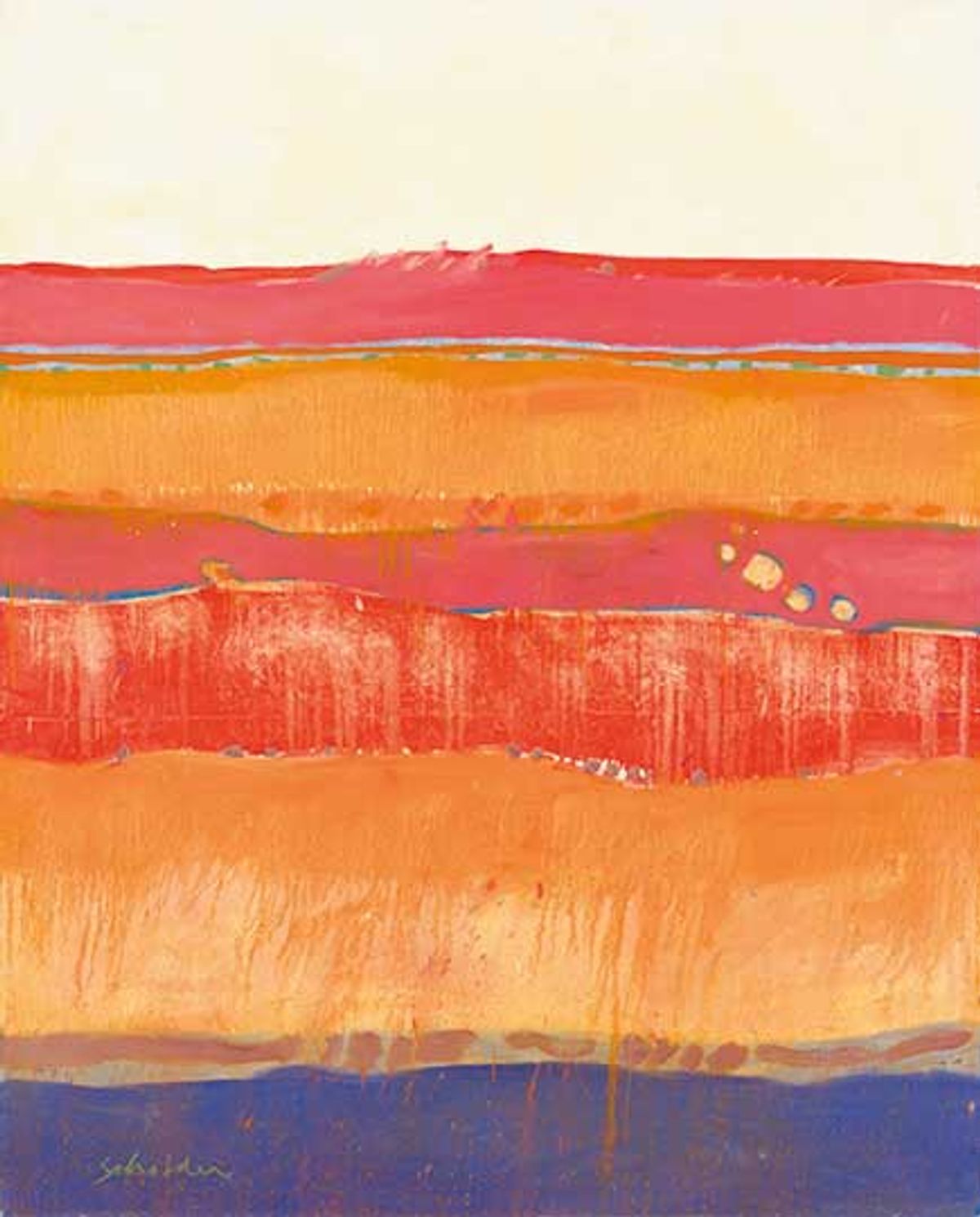An exhibition about the early days of the Institute of American Indian Arts (IAIA), founded in 1962 as the first—and only—fine-art college for Native Americans, opens this week at the Saint Louis Art Museum (SLAM). Action/Abstraction Redefined: Modern Native American Art, 1940s-70s will see ancestral aesthetics dominate and merge with Abstract Expressionism, Color field and Hard-edge painting.
In its early years, IAIA was considered the epicentre of Native American art. Lloyd Kiva New, the fashion designer and IAIA co-founder, recruited a faculty of Indigenous artists, many of whom were products of a time when the New York School of Abstract Expressionism dominated, including Fritz Scholder, whose work was informed by Jackson Pollock, Willem de Kooning and others. Works by Scholder will be among the 90-plus pieces in the show, which will also feature IAIA alumni like the printmaker and painter Linda Lomahaftewa.
The show originated at the IAIA Museum of Contemporary Native Arts in Santa Fe, New Mexico, in 2018. When Alexander Brier Marr, SLAM’s assistant curator of Native American art, saw that exhibition, he was surprised and excited by the depth of abstraction during that period. The museum worked closely with IAIA to enlarge the show, almost doubling its size. “We felt it was important to go deeper into the presentation of some of the key artists,” Marr says. One of those, Anita Fields, is a ceramicist and textile artist who attended IAIA in the early 1970s and is closely associated with the St Louis region.
Like many US museums, SLAM had been acquiring contemporary Native American art to augment its historic material. “We were missing part of the story,” Marr says. In 2010, the museum received the Danforth Collection, which included more than 250 objects by Plains Indians. Shortly after, SLAM hired its first curator of Native American art.
The show has also spurred the museum to “look and see what is missing” from its holdings, Marr says, and in March SLAM purchased Scholder’s New Mexico #45 (1966)—the first post-war painting by a Native American artist to join its collection.
- Action/Abstraction Redefined: Modern Native American Art, 1940s-70s, Saint Louis Art Museum, until 3 September


